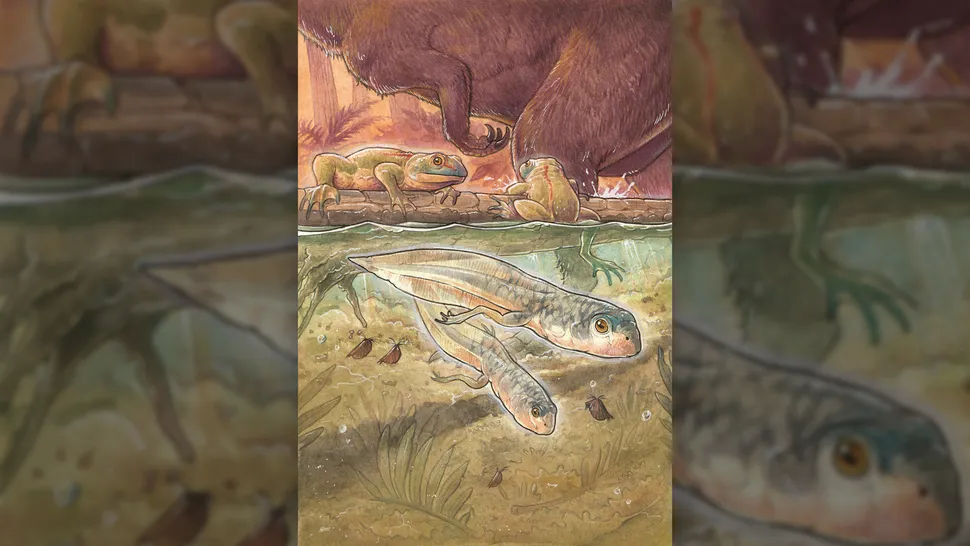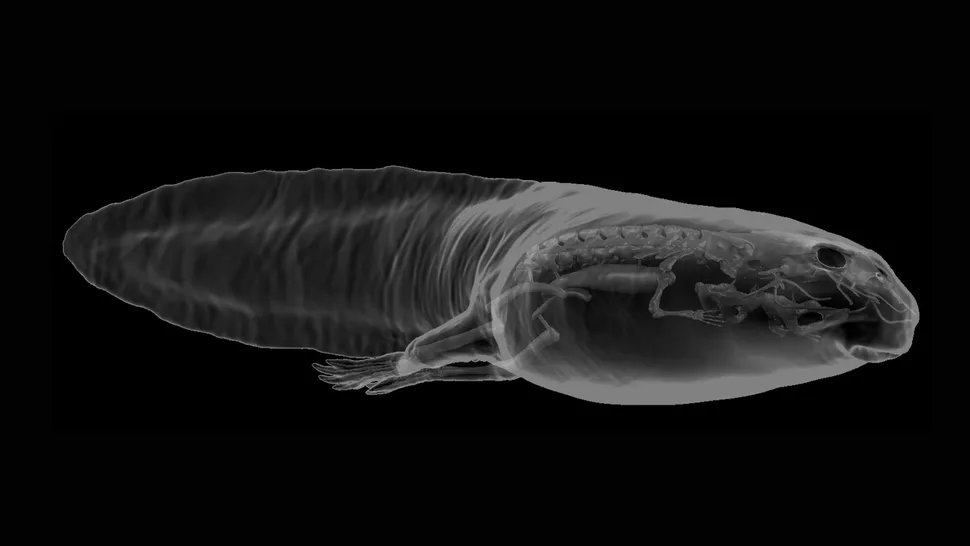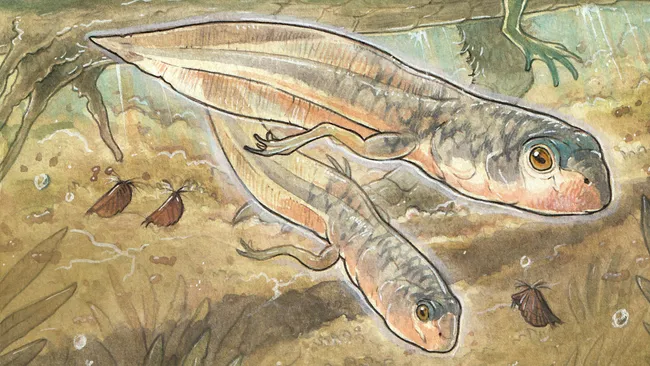The fossilization of the tadpole’s “delicate structures,” like its eyes and gills, allowed for a detailed analysis of the rare find.

While on a dinosaur fossil hunt in Argentina, paleontologists stumbled upon an extraordinary find: the oldest known tadpole fossil.
Unearthed in Patagonia’s La Matilde Formation, this discovery could finally resolve debates about frog evolution, according to findings published on Wednesday (Oct. 30) in Nature.
The fossil, an exceptionally well-preserved specimen of Notobatrachus degiustoi, includes soft tissue imprints of the tadpole’s eyes, gills, and nerves, shedding light on its ancient anatomy.

“Some researchers argue that ancient frogs may not have had a tadpole stage,” explained Mariana Chuliver, evolutionary biologist at Maimónides University and lead author of the study. Since the oldest frog fossils date back to the late Triassic period (approximately 217 million years ago), much earlier than the first known tadpole fossils, there was speculation that tadpole development came later. However, “this fossil demonstrates that was not true,” Chuliver noted. Tadpole fossils are rare due to their aquatic lifestyle and composition, as cartilage and soft tissue make fossilization challenging.
“This tadpole was advanced in its development,” Chuliver told Live Science, explaining that its vertebrae had begun to ossify, allowing researchers to identify the species and link it to its adult form. “The preservation of such delicate structures is amazing,” she said, noting the tadpole’s size was also key; measuring about 6 inches (16 cm) in length with a 3-inch (7.6 cm) tail, it closely resembles the adult frog in size.
“It’s unusual to find both juvenile and adult stages this large in nature today,” Chuliver said. But the Jurassic ponds likely provided ample resources for N. degiustoi, allowing extended development time. Despite its large size, the tadpole’s body was otherwise similar to that of modern tadpoles, even retaining spiny projections on its gills for filter-feeding. This suggests that by 161 million years ago, tadpoles had already evolved feeding systems similar to those of today, likely emerging around the same time as adult frogs.
Chuliver hopes to secure funding for further exploration in the La Matilde Formation, hoping to uncover more tadpoles and expand the fossil record.
